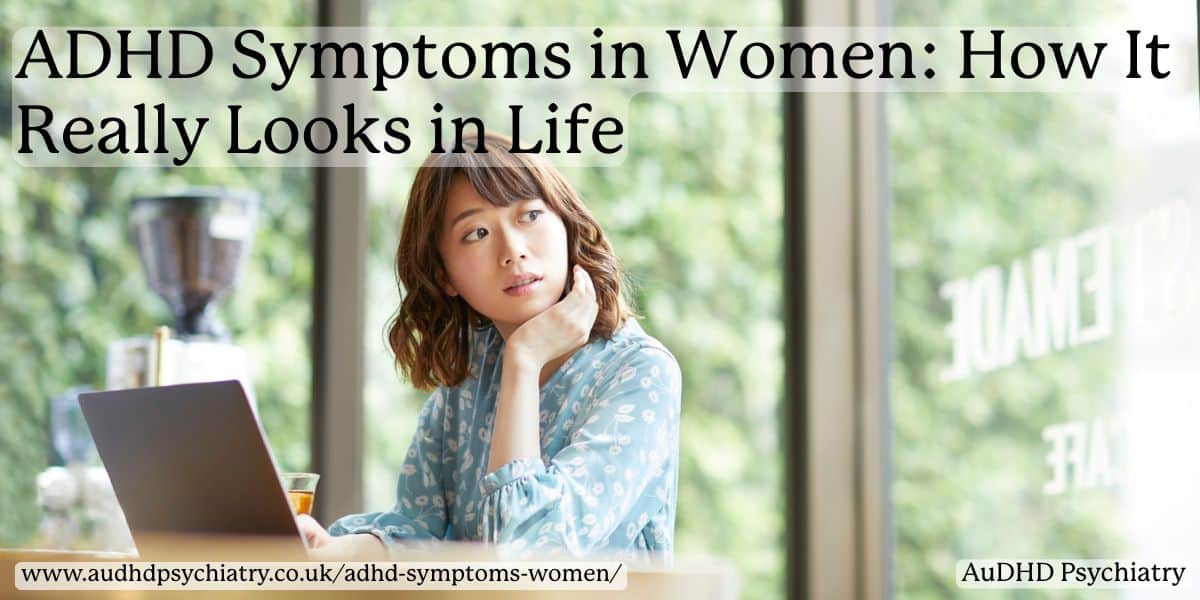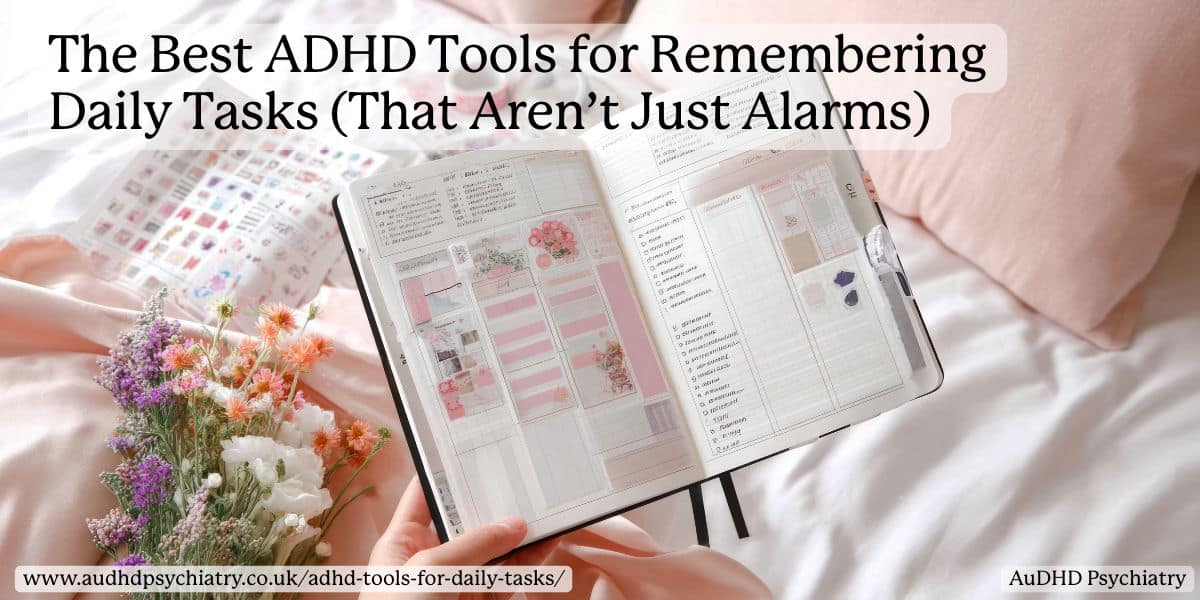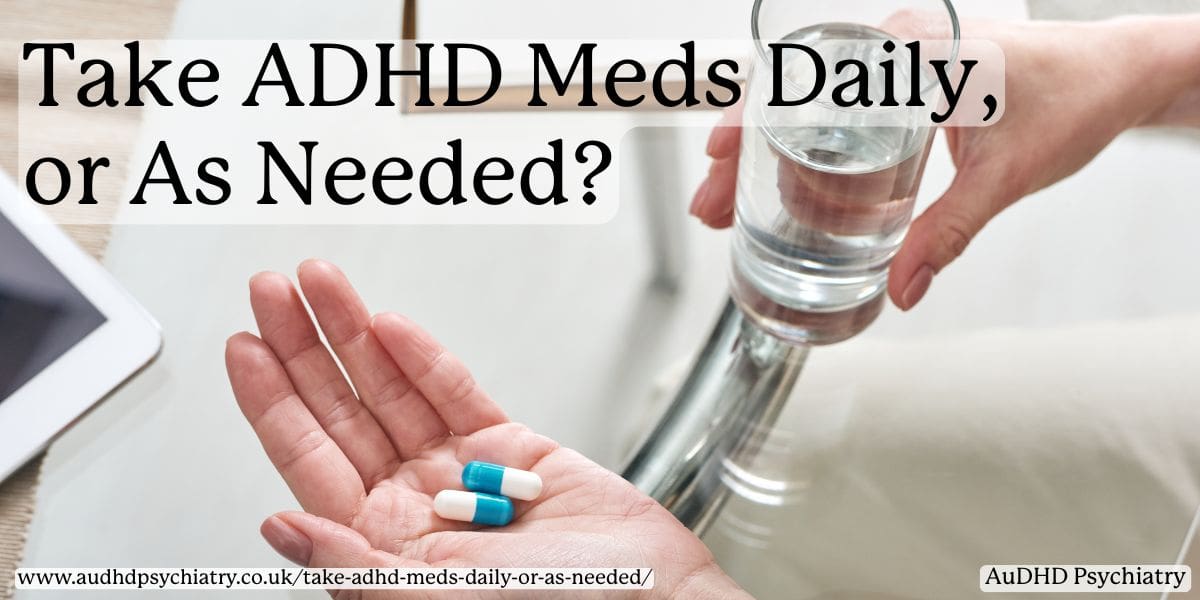Many people notice traits like difficulty focusing, sensory sensitivities, or social challenges and wonder: Is this ADHD or autism? These two neurodevelopmental conditions often overlap, yet they affect thinking, attention, and communication in distinct ways.
In short, the main difference between ADHD and autism lies in how each influences focus and social interaction. ADHD primarily affects attention, impulse control, and time management, while autism (or autism spectrum disorder) relates more to social communication, routine, and sensory processing. Still, the boundaries can blur, making professional assessment crucial for an accurate diagnosis.
Understanding these differences helps adults and families seek the right support, whether through ADHD assessments or autism evaluations. In this guide, we’ll explore how ADHD and autism compare, where they overlap, and how recognising their unique traits can lead to better self-understanding and tailored care.
Understanding ADHD and Autism Spectrum Disorder
Attention deficit hyperactivity disorder (ADHD) and autism spectrum disorder (ASD) are both neurodevelopmental disorders that affect how the brain develops and processes information. While they share certain similarities, they are distinct conditions with different patterns of behaviour, communication, and focus.
In essence, ADHD is defined by challenges with attention, impulsivity, and hyperactivity, whereas autism primarily involves differences in social communication and repetitive patterns of thought or behaviour. Both can influence emotional regulation and sensory experiences, but in specific ways.
Understanding the key differences between these neurodevelopmental conditions can help individuals, families, and healthcare providers identify which traits belong to which condition, or where overlap occurs. ADHD often presents as restlessness, forgetfulness, and difficulty maintaining sustained attention. Autism, on the other hand, tends to involve differences in social understanding, a preference for routine, and heightened or reduced sensory responses.
Because these conditions can appear similar, professional evaluation is essential. Tools like comprehensive assessments, developmental histories, and behavioural observations allow clinicians to distinguish one from the other, or to recognise when both are present. Early and accurate diagnosis leads to better support and targeted treatment plans.
If you’re considering your next steps, our guide to Professional vs Self Diagnosis explains why formal assessment matters for clarity and care.
Understanding ADHD and Autism
Both ADHD and autism are distinct neurodevelopmental conditions that begin in early childhood and influence brain development throughout life. While they share certain traits, such as differences in attention or social understanding, each condition affects the brain in unique ways.

What Is ADHD?
ADHD is a neurodevelopmental condition that impacts focus, impulse control, and emotional regulation. People with ADHD may find it difficult to sustain attention, manage time effectively, or regulate their energy levels.
There are three recognised types of ADHD:
- Inattentive type – difficulty sustaining focus, being easily distracted, and frequently losing track of tasks.
- Hyperactive-impulsive type – fidgeting, restlessness, or acting without thinking.
- Combined type – a mix of inattentive and hyperactive symptoms.
How ADHD affects the brain is that it can cause challenges with executive functioning, which is the brain’s ability to plan, organise, and manage emotions. As a result, people with ADHD might find everyday responsibilities overwhelming or experience frustration when routines break down.
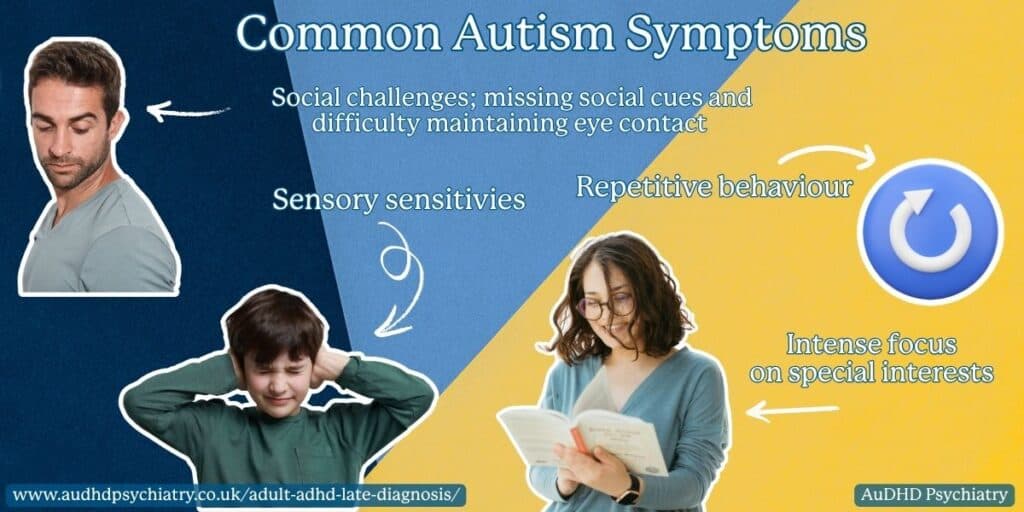
What Is Autism?
Autism spectrum disorder (ASD) is a lifelong condition that influences how a person communicates, interacts, and experiences the world. It is characterised by differences in social communication, behavioural patterns, and sensory processing.
Common autism symptoms include:
- Difficulty interpreting social cues such as tone, facial expressions, or gestures.
- Challenges with maintaining eye contact or understanding abstract language.
- Repetitive behaviours or intense focus on special interests.
- Sensory sensitivities, such as heightened responses to sound, texture, or light.
Autism exists on a spectrum, meaning experiences vary widely among those experiencing it. Some may require minimal support, while others benefit from more structured intervention through speech therapy, occupational therapy, or tailored educational plans.
Causes and Risk Factors
Both ADHD and autism arise from complex interactions between genetic, neurological, and environmental factors. They are not caused by parenting style or lifestyle choices but are understood as neurodevelopmental conditions rooted in how the brain develops.
Genetic and Neurological Factors
Research suggests that both conditions have a strong genetic component. Studies show that ADHD and autism can run in families, indicating shared hereditary influences. Genes that affect brain development, neurotransmitter balance, and nervous system functioning may increase the likelihood of developing either condition.
In both ADHD and autism, there are differences in how the brain processes information. For instance, variations in the frontal lobes and dopamine pathways are often linked to ADHD, influencing attention and impulse control. In autism, structural and connectivity differences in areas responsible for social communication and sensory processing are frequently observed.
Environmental and Developmental Influences
While genes play a major role, environmental factors can also influence early brain development. These include:
- Prenatal exposure to toxins, infections, or certain medications.
- Premature birth or low birth weight.
- Early developmental delays affecting speech, movement, or social interaction.
Importantly, these influences do not directly cause ADHD or autism but may contribute to how these conditions develop in individuals already genetically predisposed.
Recognising early signs can lead to early diagnosis and timely intervention, which greatly improves outcomes. Parents or adults who suspect symptoms are encouraged to seek professional guidance.
Overlapping Symptoms and Challenges for Autism or ADHD
Although ADHD and autism are distinct conditions, they share several overlapping symptoms that can make diagnosis complex. Many individuals experience challenges with executive functioning, social skills, and emotional regulation, which can appear similar in both conditions.
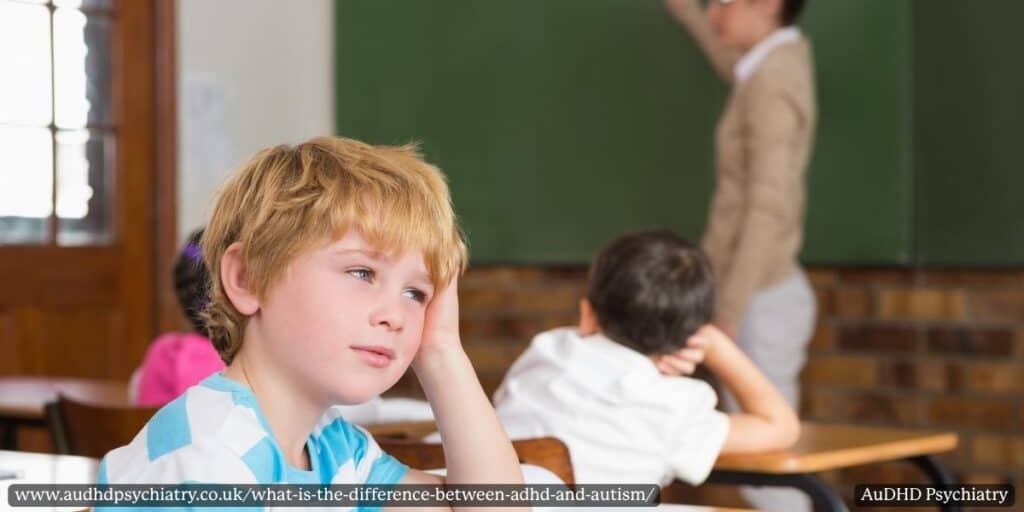
Executive Functioning and Attention
Difficulties with executive functioning are common in both ADHD and autism. This includes problems with:
- Attention span – difficulty focusing on tasks or shifting between them.
- Organisation – trouble planning, prioritising, or remembering instructions.
- Impulse control – acting quickly without thinking through consequences.
However, the reasons behind these behaviours differ. For individuals with ADHD, these challenges often stem from fluctuating focus or hyperactivity. In autism, executive function issues may arise from rigidity in thought patterns or sensory overload rather than distractibility.
Sensory Sensitivities and Social Differences
Both groups can experience sensory sensitivities—either being highly responsive or under-responsive to sensory input such as noise, texture, or light. While sensory overload can lead to withdrawal or irritability in both conditions, autistic people may show stronger preferences for routine or predictability to reduce uncertainty.
Social interaction presents another area of overlap. People with ADHD may interrupt or talk excessively due to impulsivity, whereas autistic individuals might find social cues confusing or struggle to maintain reciprocal conversations. In both cases, this can lead to difficulties navigating social situations or forming relationships.
These experiences often link to ADHD and emotional dysregulation, where difficulties managing emotional responses can intensify social misunderstandings or sensory overwhelm. Recognising this connection helps clarify why both conditions require empathy and tailored strategies rather than judgement.
Learning to recognise these shared experiences guides more accurate diagnosis and effective support. Understanding where ADHD and autism overlap reinforces that behavioural differences are not flaws but reflections of neurodivergent processing.
Key Differences Between ADHD and Autism
While ADHD and autism often share overlapping symptoms, they are distinct neurodevelopmental conditions with different underlying characteristics. Understanding these main differences helps clarify why some traits may appear similar while others are unique to each diagnosis.
Core Symptom Comparison
| Area | ADHD | Autism (ASD) |
| Attention and Focus | Fluctuating focus — may switch quickly between tasks or struggle to stay on one topic. | Deep, sustained focus on specific interests or tasks (sometimes called “monotropism”). |
| Social Communication | May interrupt or talk excessively due to impulsivity. | May find it difficult to read facial expressions, tone, or body language. |
| Behavioural Patterns | Often seeks stimulation, dislikes repetitive tasks, and acts spontaneously. | Prefers predictability, may engage in repetitive movements or routines. |
| Emotional Regulation | Quick to react; struggles with frustration and time management. | Emotions may appear muted or intense but are often related to sensory or communication differences. |
The difference between ADHD and autism lies mainly in how individuals respond to their environment. ADHD is typically characterised by distractibility, impulsivity, and restlessness. Autism, by contrast, is defined by social communication differences, restricted interests, and repetitive behaviours.
In adults, these differences can become harder to detect. For example, someone with ADHD might appear scattered or impulsive, while an autistic person might seem withdrawn or overly focused. Both may face misunderstanding in workplaces or relationships.
Accurate diagnosis ensures the right kind of support, whether that involves targeted therapy, structured routines, or environmental adjustments. For further clarification on how ADHD is defined and classified, visit ADD vs ADHD.

Diagnosing ADHD vs Autism
Because ADHD and autism share some overlapping features, obtaining an accurate diagnosis can be complex. Both require a comprehensive evaluation by qualified healthcare professionals using established diagnostic criteria from the Diagnostic and Statistical Manual of Mental Disorders (DSM-5), published by the American Psychiatric Association.
Diagnostic Criteria and Evaluation Process
A full diagnostic evaluation involves multiple steps, including:
- Clinical interviews with the individual and, where appropriate, family members.
- Behavioural assessments that measure attention, impulse control, and social interaction.
- Developmental histories reviewing early childhood milestones and patterns.
- Input from speech-language pathologists, occupational therapists, or other health professionals where needed.
For ADHD, assessment focuses on attention regulation, impulsivity, and hyperactivity. For autism, the emphasis is on social communication, repetitive behaviours, and restricted interests.
It’s also possible for an individual to be misdiagnosed or to have both conditions simultaneously, known as dual diagnosis or comorbid ADHD and autism (AuDHD). In such cases, clinicians must carefully distinguish whether overlapping behaviours (such as inattention or sensory sensitivity) stem from one condition, both, or another underlying issue.
Seeking assessment through a qualified provider ensures that you receive the most accurate diagnosis and appropriate support plan.
ADHD and Autism Across the Lifespan
ADHD and autism are lifelong neurodevelopmental conditions, but how they appear can vary greatly between early childhood, adolescence, and adulthood. Understanding these changes helps individuals and families recognise signs that might otherwise go unnoticed.
How Symptoms Present in Children vs Adults
In children, ADHD often shows up as restlessness, distractibility, and difficulty following instructions. Autistic children, meanwhile, may prefer solitary play, struggle with social interactions, or show intense interest in particular subjects. Both may find transitions challenging, especially in structured environments like school.
As people grow older, these symptoms often shift. Adults with ADHD might appear chronically disorganised, struggle with time management, or experience emotional highs and lows. Adults on the autism spectrum may continue to face challenges in social communication, sensory processing, or adapting to workplace routines.
However, both groups develop strategies to manage their traits. Early support, therapy, and understanding from employers can make a significant difference in long-term outcomes.

Gender Differences and Masking in Women and Girls
In recent years, there’s growing recognition of how ADHD and autism can look different in women and girls. Many have learned to “mask” their difficulties—consciously or unconsciously mimicking social norms to blend in. This masking often delays diagnosis, especially for women with inattentive ADHD or autism without intellectual disability.
Because of these patterns, countless women reach adulthood before being formally identified. This can lead to anxiety, exhaustion, or self-doubt. By acknowledging how symptoms evolve and differ by gender, clinicians can better support individuals across the lifespan, ensuring that diagnosis and treatment are both accurate and inclusive.
Co-occurrence of ADHD and Autism (AuDHD)
It is possible to have both ADHD and autism, a combination known as dual diagnosis or comorbid ADHD and autism (also called AuDHD). In fact, studies suggest that up to 50–70% of autistic individuals also meet the criteria for ADHD, highlighting the significant overlap between these neurodevelopmental disorders.
Can You Have Both ADHD and Autism?
Yes, although the conditions are distinct, they can coexist. Both affect the way the brain regulates attention, emotion, and sensory input. Someone with both may display a mix of traits, such as impulsivity from ADHD and sensory sensitivities from autism. This can complicate daily life, as one condition may mask or intensify the symptoms of the other.
How Common Is Dual Diagnosis?
Prevalence studies show that comorbidity is common. People with autism spectrum disorder (ASD) may also experience ADHD traits such as restlessness, distractibility, or difficulty with executive functioning. Similarly, those diagnosed with ADHD might display autistic traits, including a need for structure, difficulty interpreting social cues, or intense focus on specific interests.
Recognising co-occurrence ensures individuals receive the right combination of interventions. This may involve behavioural therapy, occupational therapy, and environmental adjustments to accommodate both sets of needs.
Implications of Having Both Autism and ADHD
Dual diagnosis can influence academic performance, relationships, and emotional well-being. However, with proper understanding and targeted support, individuals can learn effective coping strategies. Comprehensive, personalised assessments are key to identifying overlapping challenges.
If you suspect you may have traits of both ADHD and autism, explore our guide on How to Get Tested for Neurodivergence.

Seeking Help and Support for ADHD and ASD
Getting the right help for ADHD or autism begins with understanding where to seek a proper diagnosis and what forms of ongoing support are available. While both the NHS and private providers offer pathways to assessment and treatment, the experience and timelines can differ significantly.
Where to Get Diagnosed
In the UK, assessments are typically arranged through your GP, who can refer you to an NHS neurodevelopmental clinic. However, NHS waiting lists for both ADHD and autism can be long—often several months to over a year. Some people choose to wait, while others decide to pursue a private assessment to receive clarity and support sooner.
At AuDHD Psychiatry, we provide private ADHD, autism, and AuDHD (combined ADHD and autism) assessments for adults. Our clinicians specialise in neurodivergent-affirming care, offering thorough, evidence-based evaluations that consider the full picture, from early development to current daily challenges.
We also provide treatment and medication management, ensuring that every individual receives the right care plan after diagnosis. Our multidisciplinary team includes psychiatrists, psychologists, and allied professionals such as occupational therapists and speech-language pathologists, who help tailor support to each person’s needs.
Resources, Organisations, and Support Networks
After diagnosis, ongoing care and connection play an essential role in maintaining wellbeing. UK residents can access workplace funding through the government’s Access to Work scheme, which provides financial support for coaching, assistive tools, and other adjustments. You can learn more in our Access to Work ADHD Guide.
Beyond clinical care, community organisations and peer networks help individuals find understanding and encouragement. Many charities and advocacy groups across the UK offer workshops, helplines, and social groups for neurodivergent adults.
For practical resources to manage focus, organisation, and self-regulation, explore our curated ADHD Resources and Tools, which we’ve designed to support everyday life alongside professional treatment.
What Is the Difference Between ADHD and Autism: Conclusion
ADHD and autism are both lifelong neurodevelopmental conditions, but they differ in how they affect focus, communication, and behaviour. ADHD is largely defined by challenges with attention regulation, impulsivity, and time management, while autism relates more to social communication, sensory processing, and routine-based thinking. Despite these distinctions, many individuals experience overlapping symptoms — making professional assessment the only reliable way to receive an accurate diagnosis.
Understanding the differences between ADHD and autism allows people to access the right treatment, accommodations, and community support. Whether you’re exploring symptoms for yourself or a loved one, early recognition and the right guidance can make all the difference in quality of life.
If you’re ready to take the next step, book a comprehensive ADHD, autism, or AuDHD assessment with AuDHD Psychiatry. Our clinical team offers evidence-based diagnosis, therapy, and medication management tailored to your individual needs, helping you gain clarity, confidence, and the tools to thrive.
You Might Also Like

